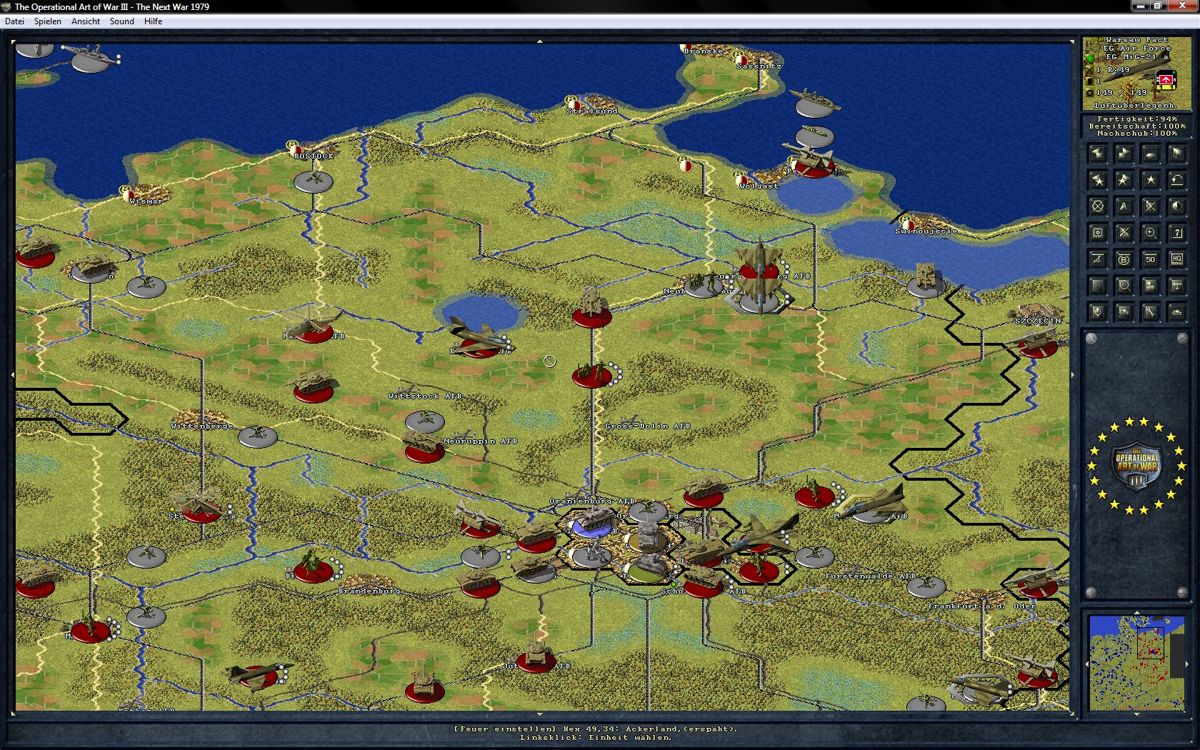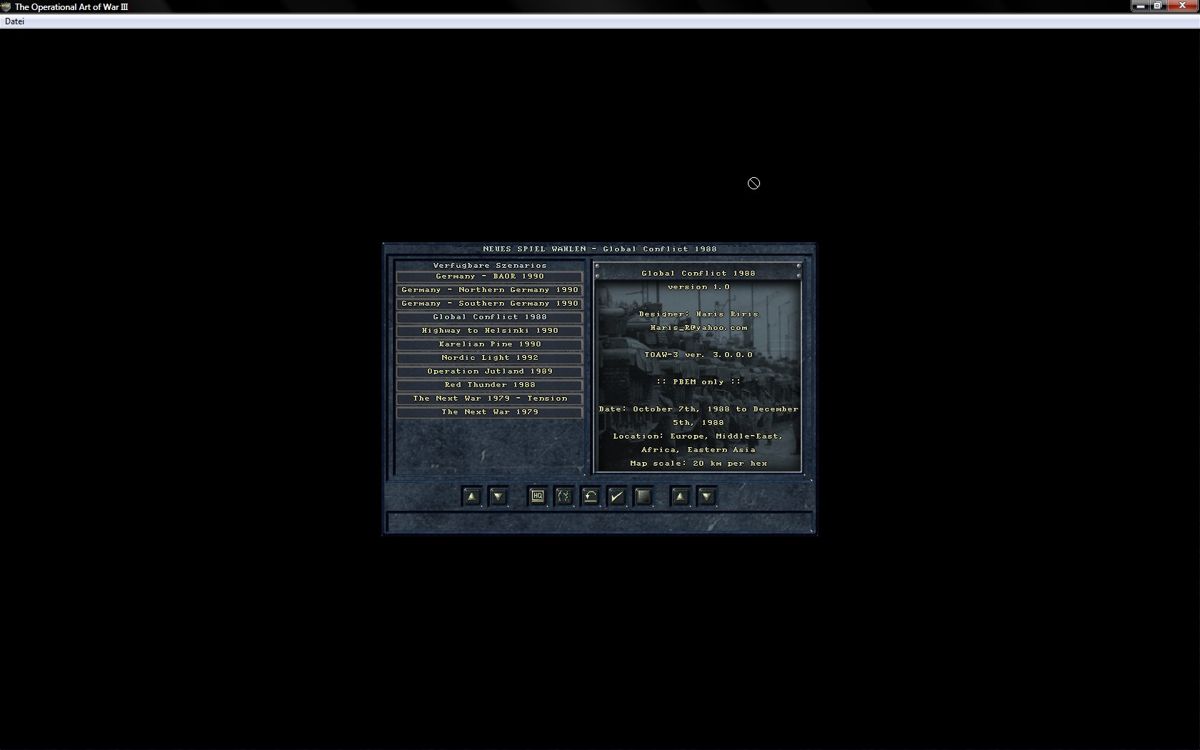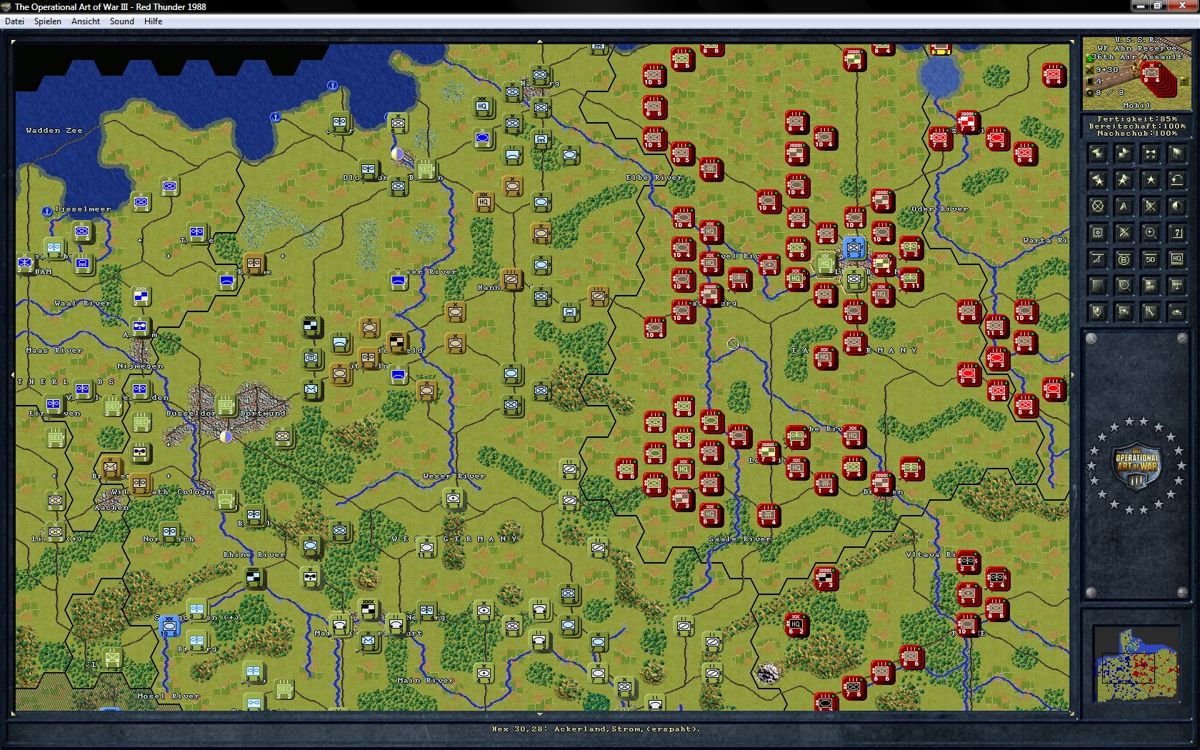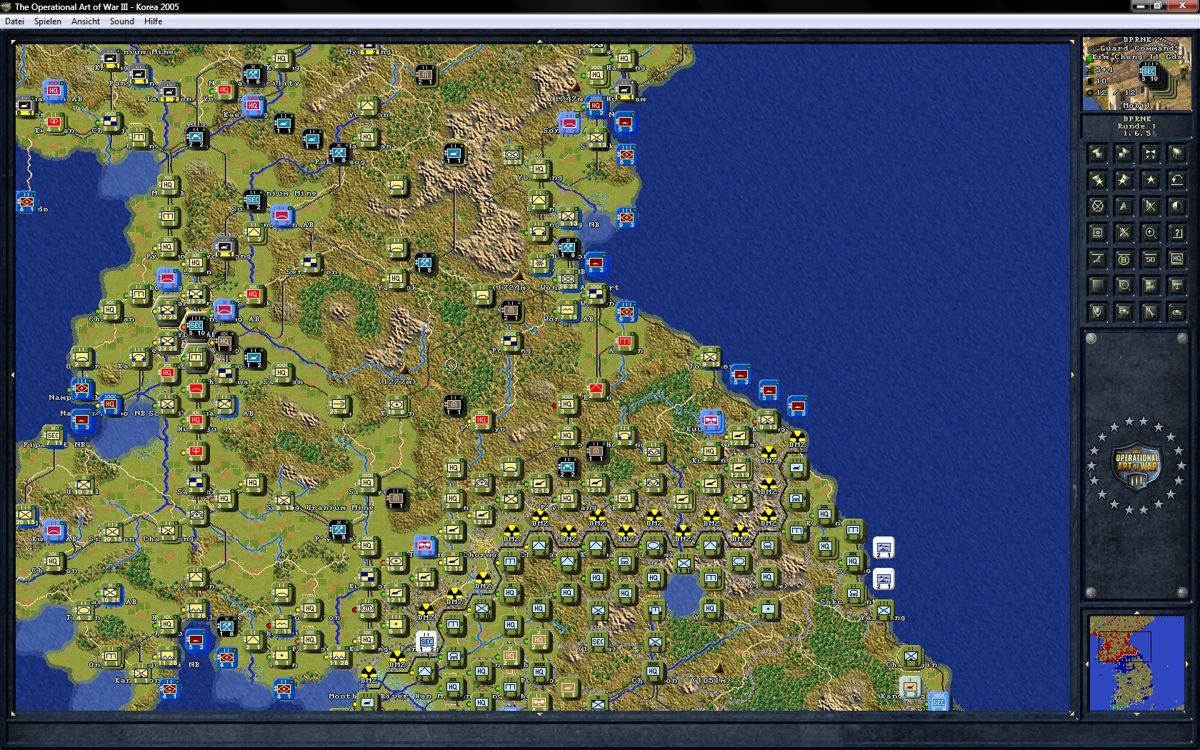Retro Replay Review
Gameplay
Norm Koger’s The Operational Art of War III remains a pinnacle of hex-based, turn-based strategy, delivering a deeply layered and methodical experience. Players take command of entire armies, managing supply lines, morale, and unit formations over sprawling maps. The refined game engine, carried over and heavily updated from TOAW I and II, ensures that every decision—from artillery barrages to armored thrusts—carries weight and consequence.
The scenario library is staggering in scope, ranging from small tactical encounters to massive theater-level operations spanning World War I through modern and near-future conflicts. Each scenario can be played solo against the AI, hotseat with a friend, or via play-by-email (PBEM), catering to both quick skirmishes and marathon campaigns. The AI has received numerous tweaks, making computerized opponents both challenging and more realistic in their operational choices.
One of the most compelling aspects of TOAW III’s gameplay is the scenario and campaign editor. Enthusiasts can craft custom orders of battle, define victory conditions, and even script event triggers. This level of granularity empowers the community to produce and share new content, extending replayability almost indefinitely. While the initial learning curve is steep—owing to the depth of logistics, terrain effects, and command rules—carefully written tutorials and an active online forum help smooth the path for newcomers.
Graphics
Visually, The Operational Art of War III embraces a functional, minimalist aesthetic, prioritizing clarity over eye candy. The hex-based maps are rendered in clean 2D artwork, with distinct color palettes for terrain types—forests, rivers, urban centers, and deserts—ensuring that the tactical implications of every tile are immediately apparent. Unit counters are crisp and intuitively labeled, highlighting strength, movement points, and combat factors.
Although the game does not feature 3D models or dynamic camera angles, the static visuals are highly serviceable. Animations are limited to movement previews and combat result icons, yet each phase of play remains visually coherent. The UI, while text-heavy, benefits from responsive menus, tooltips, and a customizable sidebar, allowing veteran players to tailor their display to preferred metrics—be it supply overlays or zone-of-control shading.
One of the most welcome graphical improvements over earlier TOAW entries is animated hex highlighting during planning phases, coupled with an updated map zoom that maintains crispness at any scale. Scenario designers can also import custom map graphics and unit icons, adding aesthetic variety to community-made campaigns. Overall, while TOAW III isn’t a visual showcase by modern standards, its purposeful design keeps every battlefield element legible and strategically meaningful.
Story
Strictly speaking, The Operational Art of War III does not offer a linear, character-driven narrative. Instead, the “story” emerges through historical scenarios that recreate pivotal operations, battles, and campaigns. Each scenario begins with a concise briefing document outlining strategic objectives, order of battle, and essential historical context. These briefings effectively set the stage, immersing players in the challenges faced by real-world commanders.
The lack of scripted cinematics or cutscenes is offset by richly detailed orders-of-battle and accurate order texts. Players can sense the logistical nightmares of Operation Market Garden, the river crossings of Kursk, or hypothetical near-future clashes purely through scenario design. This documentary-style presentation encourages gamers to learn about military history while actively rewriting it on the tabletop map.
For enthusiasts seeking a deeper narrative thread, the community has produced linked scenario chains that serve as mini-campaigns. These interconnected battles allow outcomes of early engagements to influence subsequent scenarios, creating a personalized “story” shaped by player performance. In this way, TOAW III fosters emergent storytelling through strategic consequence rather than scripted dialogue.
Overall Experience
The Operational Art of War III delivers a mammoth, immersive wargaming experience tailored to the strategic aficionado. Its blend of legacy features—dating back to the original TOAW titles—and modern engine improvements provides a stable platform for both classic enthusiasts and newcomers. With hundreds of scenarios included out of the box and almost limitless custom content, the game boasts staggering replay value.
Despite its depth, some players may find the interface and terminology intimidating at first. However, Matrix Games has addressed numerous long-standing bugs and refined the tutorial system to ease players into the complex mechanics. The active user community online also offers guides, mod packs, and scenario downloads that further lower the barrier to entry.
In summary, Norm Koger’s The Operational Art of War III is a rich, detail-oriented strategy simulation that rewards careful planning, historical curiosity, and perseverance. While it may not cater to those seeking fast-paced action or flashy graphics, it stands as one of the most comprehensive operational-level wargames available. For buyers craving deep strategic challenge and near-endless battlefield variety, TOAW III remains a must-have title.
 Retro Replay Retro Replay gaming reviews, news, emulation, geek stuff and more!
Retro Replay Retro Replay gaming reviews, news, emulation, geek stuff and more!









Reviews
There are no reviews yet.